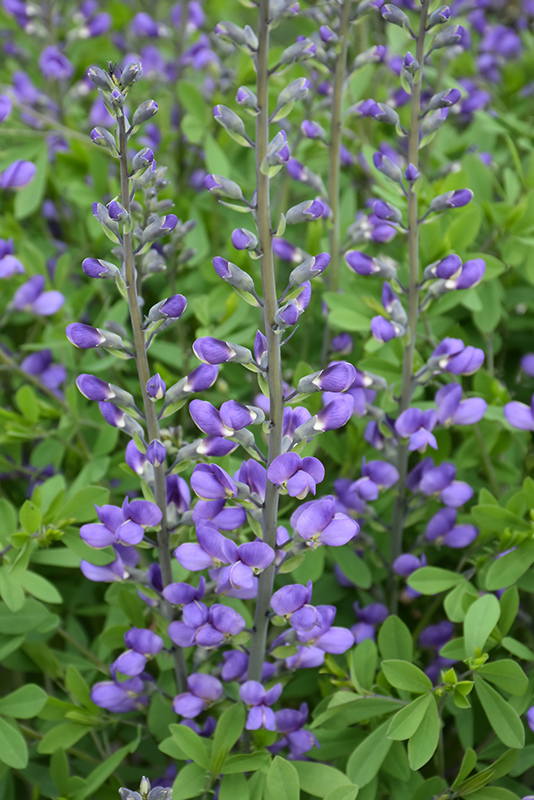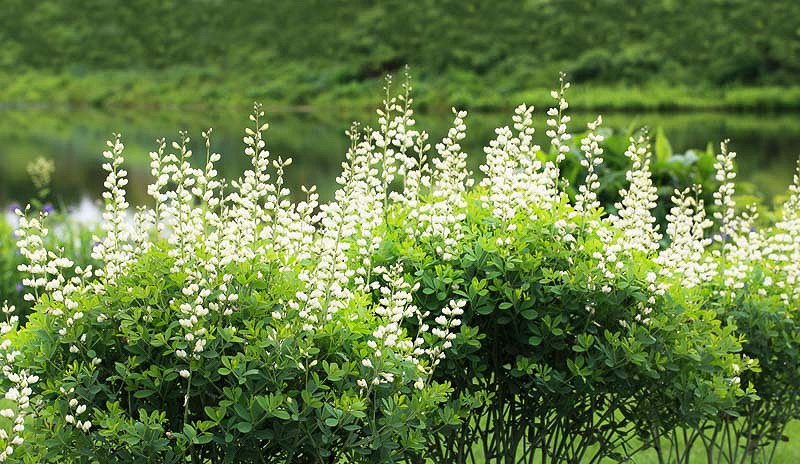Culver's Root Companion Plants: The Best Plants To Grow With This Elegant Perennial
Culver's root (Veronicastrum virginicum) is a beautiful and versatile perennial plant that can add a touch of elegance to any garden. It's known for its tall, upright spikes of white or pink flowers that bloom in late summer and fall. Culver's root is also a valuable addition to pollinator gardens, as it attracts a variety of butterflies, bees, and other insects.
One of the best ways to enhance the beauty and appeal of Culver's root is to plant it with companion plants. Companion planting is the practice of planting different types of plants together in order to create a mutually beneficial relationship. When plants are chosen carefully, they can help each other to thrive by providing shade, nutrients, or pest control.
There are many different companion plants that can be grown with Culver's root. Some of the best options include:
- Blue wild indigo: This native wildflower is a beautiful addition to any garden. It blooms in shades of blue and purple in late summer and fall, and it attracts a variety of pollinators. Blue wild indigo also helps to improve the soil quality around it, making it a great choice for companion planting with Culver's root.

- White wild indigo: This another native wildflower that is similar to blue wild indigo. It blooms in shades of white and blue in late summer and fall, and it also attracts a variety of pollinators. White wild indigo is a bit more drought-tolerant than blue wild indigo, so it may be a better choice for gardens in dry climates.

- Ohio spiderwort: This native wildflower is known for its delicate, blue flowers that bloom in early summer. Ohio spiderwort is a low-growing plant that can be used to create a groundcover under Culver's root. It also helps to attract butterflies and other beneficial insects.

- Common milkweed: This native wildflower is a valuable food source for monarch butterflies. It blooms in shades of pink and purple in late summer and fall. Common milkweed is a tall plant that can be used to provide shade for Culver's root.

- Early sunflower: This native wildflower is known for its bright yellow flowers that bloom in early summer. Early sunflower is a low-growing plant that can be used to create a groundcover under Culver's root. It also helps to attract pollinators.
These are just a few of the many companion plants that can be grown with Culver's root. When choosing companion plants, it is important to consider the plant's needs in terms of sunlight, water, and soil conditions. It is also important to choose plants that will complement each other's colors and textures.
With a little planning, you can create a beautiful and harmonious garden by planting Culver's root with the right companion plants.
Culver's root (Veronicastrum virginicum) is a beautiful native perennial that can add a touch of elegance to any garden. It blooms in late summer with tall spikes of white flowers, and its foliage is a deep green that provides a striking contrast to other plants.
Culver's root is a relatively easy plant to care for, but it does best in moist, well-drained soil. It can be planted in full sun or partial shade, and it is relatively drought tolerant once established.
When choosing companion plants for culver's root, it is important to consider the plant's moisture and light requirements. Some good companion plants include:
- Lead plant (Amorpha canescens) Garden Wiki
- Heath aster (Aster ericoides) Garden Wiki
- Shooting star (Dodecatheon meadia) Garden Wiki
- Rattlesnake master (Eryngium yuccifolium) Garden Wiki
- Flowering spurge (Euphorbia corollata) Garden Wiki
- Sawtooth sunflower (Helianthus grosseserratus) Garden Wiki
- Wild bergamot (Monarda fistulosa) Garden Wiki
- Mountain mint (Pycnanthemum muticum) Garden Wiki
- Yellow coneflower (Rudbeckia hirta) Garden Wiki
- Black-eyed Susan (Rudbeckia hirta var. pulcherrima) Garden Wiki
- Compass plant (Silphium laciniatum) Garden Wiki
- Prairie dock (Silphium perfoliatum) Garden Wiki
- Stiff goldenrod (Solidago rigida) Garden Wiki
- Cordgrass (Spartina pectinata) Garden Wiki
- Prairie dropseed (Sporobolus heterolepis) Garden Wiki
- Golden Alexanders (Zizia aurea) Garden Wiki
For more information about culver's root companion plants, please visit Garden Wiki.
FAQ of culver's root companion plants
- What are some good companion plants for culver's root?
Culver's root (Veronicastrum virginicum) is a tall, upright perennial that blooms in late summer with spikes of white or pink flowers. It is a nitrogen-fixing plant, which means it helps to improve the soil quality for other plants. Some good companion plants for culver's root include:
* Echinacea: This coneflower helps to deter pests and diseases.
* Yarrow: This daisy-like plant attracts beneficial insects.
* Bee balm: This mint plant attracts pollinators.
* Black-eyed Susan: This daisy-like plant is drought-tolerant and can help to suppress weeds.
* Butterfly weed: This milkweed plant attracts butterflies and other pollinators.
- How far apart should I plant culver's root?
When planting culver's root, it is important to space the plants about 3 feet apart on center. This will allow the plants to reach their maximum spread and thrive.
- How do I propagate culver's root?
Culver's root can be propagated by division in the late fall or early spring. To do this, carefully dig up a mature plant and divide it into several smaller clumps. Each clump should have at least one healthy root system. Plant the clumps in well-drained soil and water them regularly.
- What are some common pests and diseases of culver's root?
Culver's root is generally a hardy plant and is not susceptible to many pests or diseases. However, it can be affected by aphids, spider mites, and powdery mildew. If you notice any pests or diseases on your culver's root plants, you can treat them with insecticidal soap or neem oil.
- What are the benefits of planting culver's root?
Culver's root has several benefits, including:
* It is a nitrogen-fixing plant, which means it helps to improve the soil quality for other plants.
* It attracts beneficial insects, such as pollinators.
* It is drought-tolerant and can help to suppress weeds.
* It has medicinal properties and can be used to treat a variety of health conditions.
Image of culver's root companion plants
Here are 5 different images of "culver's root companion plants" from Pinterest:
- Black-eyed Susan: Culver's root and black-eyed Susan are both native North American wildflowers that attract butterflies and other pollinators. They can be planted together in a sunny spot in the garden.

- Butterfly weed: Butterfly weed is another native wildflower that is a favorite of butterflies. It blooms in the summer and attracts monarch butterflies, swallowtails, and other species. Culver's root can be planted alongside butterfly weed to provide nectar and pollen for the butterflies.
- Goldenrod: Goldenrod is a tall, yellow-flowered plant that blooms in the fall. It is a good companion plant for culver's root because it attracts beneficial insects, such as ladybugs and lacewings, that help to control pests.

- Joe Pye weed: Joe Pye weed is a tall, native wildflower that blooms in the summer. It attracts butterflies, bees, and other pollinators. Culver's root can be planted alongside Joe Pye weed to create a pollinator-friendly garden.

- Milkweed: Milkweed is another native wildflower that is a favorite of monarch butterflies. It blooms in the summer and provides the monarch caterpillars with their only food source. Culver's root can be planted alongside milkweed to create a butterfly garden.


Post a Comment for "Culver's Root Companion Plants: The Best Plants To Grow With This Elegant Perennial"